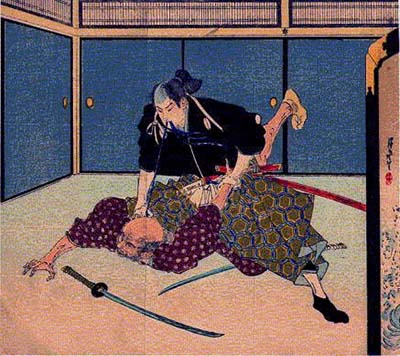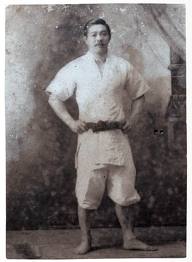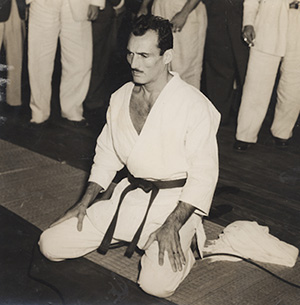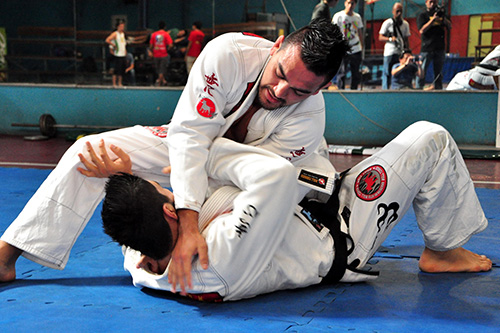 |
| Representation of samurai doing a technique |
Ju-jutsu translated means "weaponless martial art." It actually represents a generic name for all martial arts originating from Japan which are known today, and in which only the human body is used, without the help of additional weapons and/or armor. Mostly due to ignorance about the Japanese language in the countries in the rest of the world , the term jujutsu is now used as a name for a specific martial art on par with karate, judo, aikido, etc. But it is useful to know that Ju-jutsu practically contains all these particular arts.
" Ju " (柔) can be translated as " gentle , soft , supple , flexible , and " Jutsu "(术) can be translated as " art " or " skill ".
Ju-jutsu is an art of fighting chest to chest, without arms. Therefore it teaches strokes, grips, levers, throws, defensive elements, escape movements etc. The purpose of this study is to disable an opponent, wounding or killing him. This unworthy and destructive purpose is implied for the time of the development and use of the martial arts, but from today's perspective is undesired. Japanese tradition in fostering knowledge about this kind of skills is due to the recognition of the benefits of the very knowledge and understanding that such knowledge doesn’t have to be used for destruction, but indirectly, for constructiveness and social and personal well-being.
 |
| Mitsuyo Maeda |
 |
| Hélio Gracie |
Nowadays, Brazilian Ju - jitsu is a world famous sport discipline and is mass-practiced. But we should not forget that because of its sport character, like modern Judo, and all other combat sports, the applied rules that prohibit inflicting incurable injuries and permanent damage, lower the spectrum of defense techniques (and attack techniques) and thus loses integrity as martial art. It is one of two things that make combat martial art sports different from aikido. The second big difference is the idea of non-aggression and refrain from violation, which is the base on which aikido is build, and this is the reason why in aikido competitions aren’t possible. Instead, we cherish the idea of self-development, rather than one-time victory that brings short-term fame and gratification of human vanity.
 |
| The modern sport - Brazilian Jiu-Jitsu |



